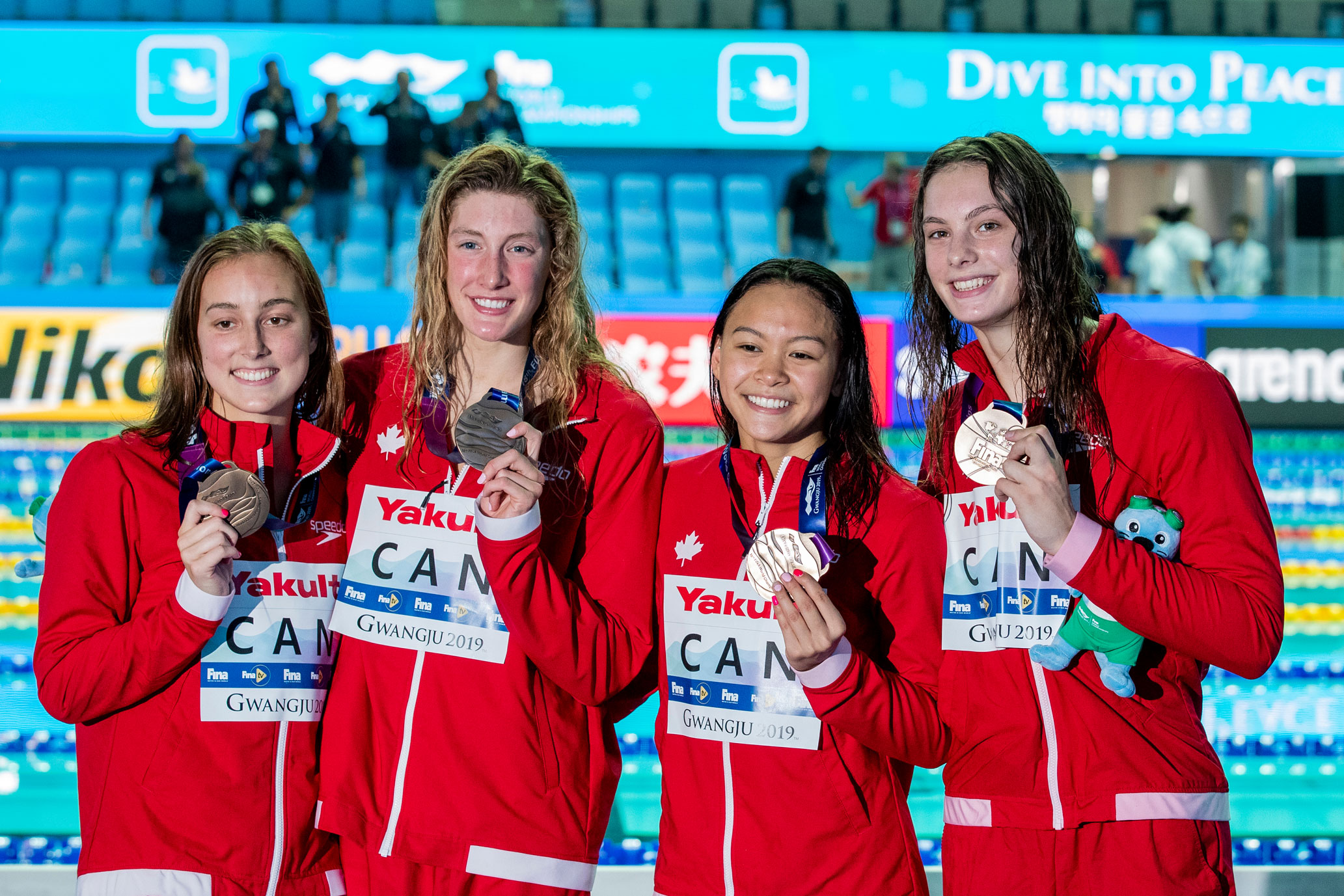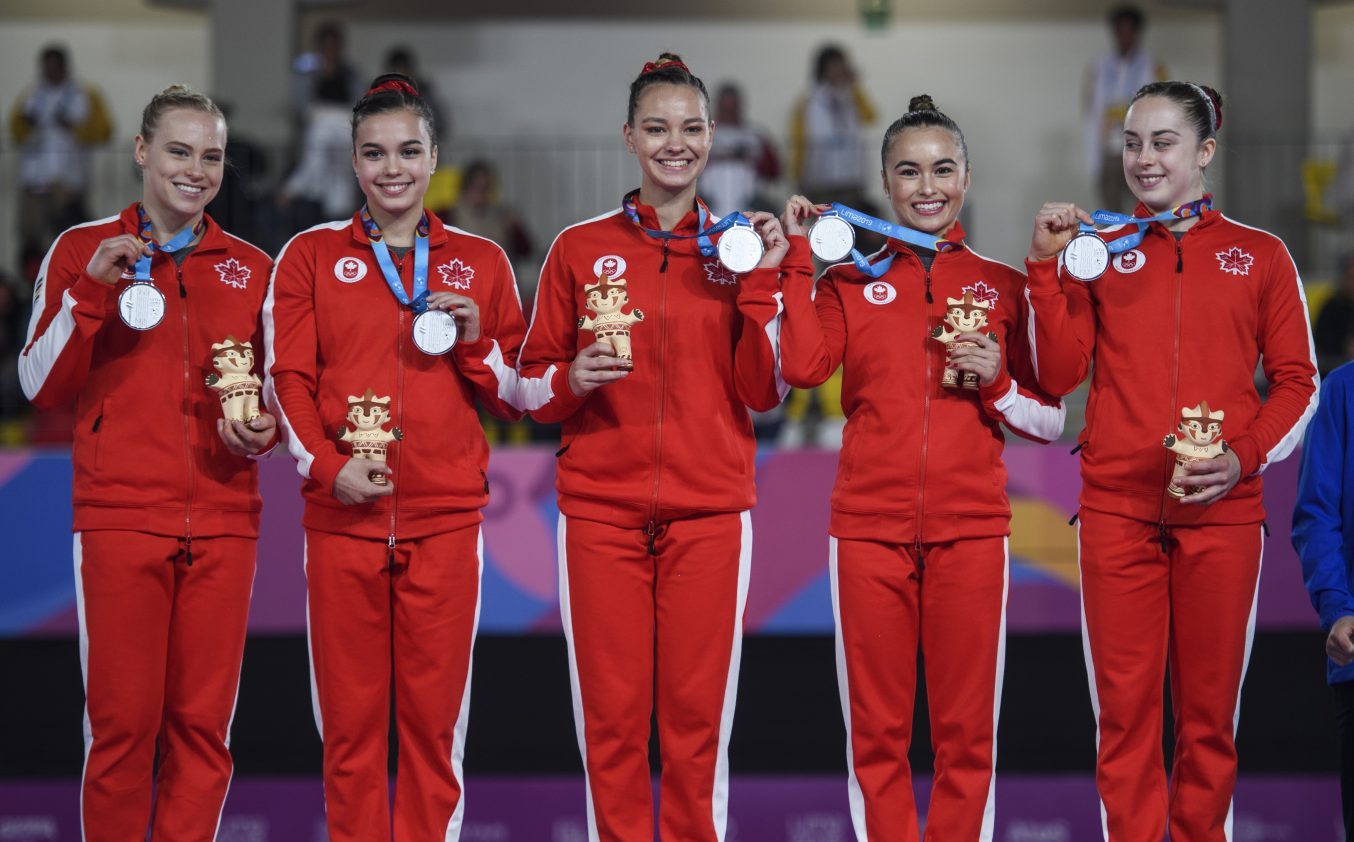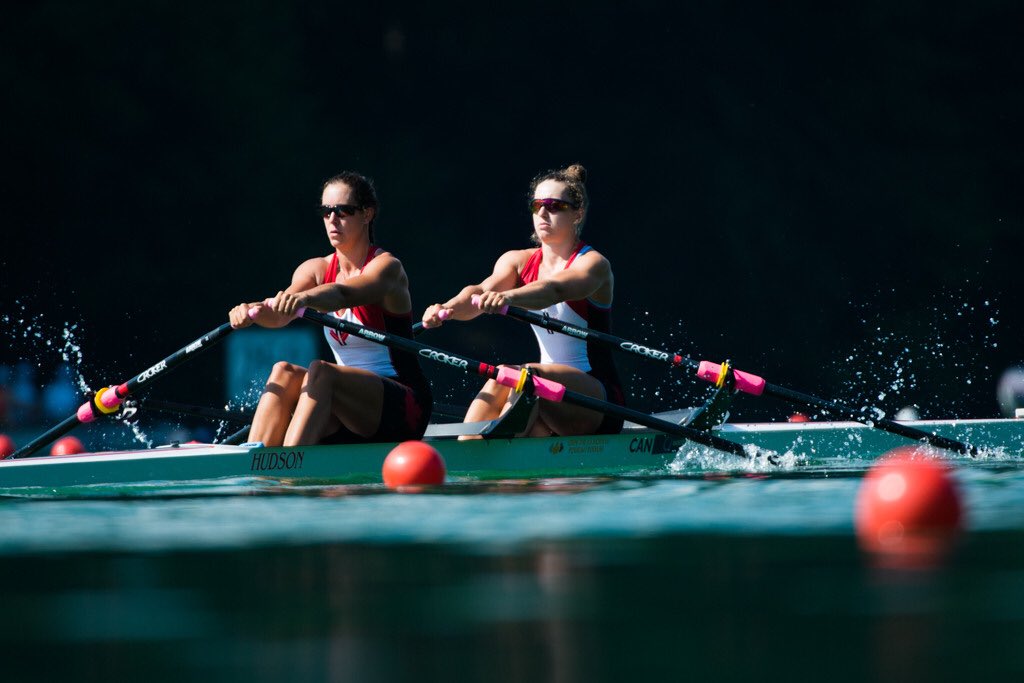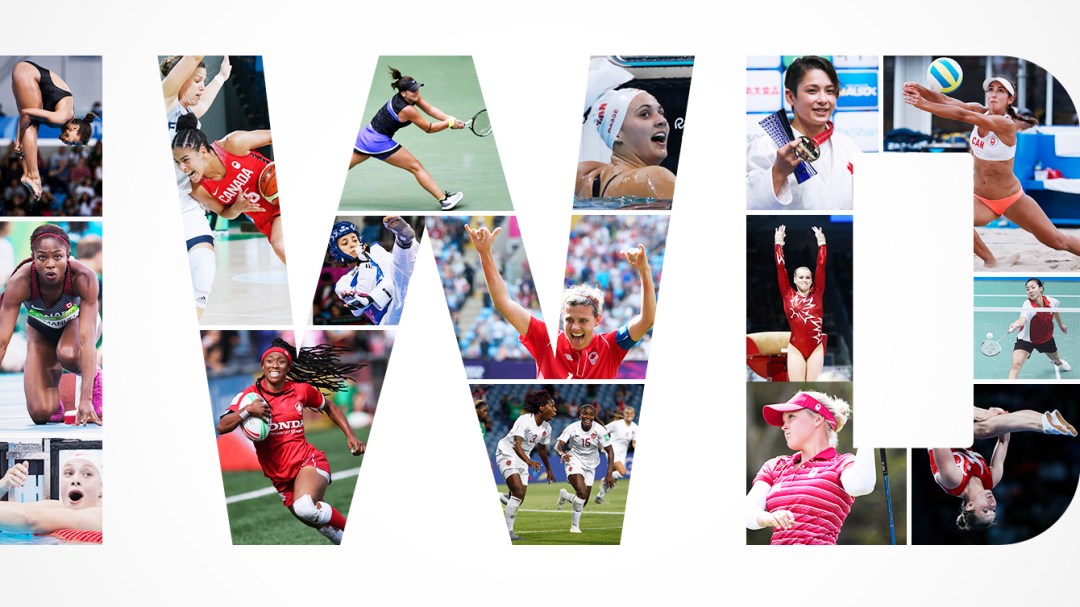Women leading the way for Team Canada on the road to Tokyo 2020
From Bianca Andreescu to Brooke Henderson, Penny Oleksiak to Ellie Black , and rugby to soccer to softball, women will feature prominently for Team Canada at Tokyo 2020.
Female athletes have been leading the charge in qualifying spots for Canada at this summer’s Olympic Games. Of the 218 quota spots that Canada officially secured by the end of February, 65% of them belong to women. Taking it a step further, across the 60 events in which Canada has officially qualified, 58% of them are in women’s categories.
Women are likely to dominate the Canadian representation in many sports during Tokyo 2020. Among some of the notables, women have locked up 18 of Canada’s 20 rowing spots earned thus far, six of Canada’s seven diving spots at this point, and four of the five places in artistic gymnastics. Additionally, the Canadian women qualified all three of their swimming relays (4x100m freestyle, 4x100m medley, 4x200m freestyle) at last year’s world championships.
Related: Tokyo 2020 Team Canada Qualification Tracker
All that to say, Canadian women will be well represented in Tokyo.

Emily Overholt, Taylor Ruck, Kayla Sanchez, and Penny Oleksiak show off their bronze medals from the women’s 4x200m freestyle relay on Thursday July 25, 2019 at the FINA World Championships in Gwangju, South Korea. (Joseph Kleindl/Swimming Canada)
But their unmitigated success doesn’t stop simply at Olympic representation. You can expect many of these women to be in the mix for the podium in July and August.
The five Canadian women’s teams that have qualified for Tokyo 2020 find themselves in the top 10 of their respective international rankings. Rugby sits third in the Sevens Series standings, softball is number three in their world rankings, while basketball is number four.
Individual sports have been fruitful for Canadian women as well. At the most recent FINA World Championships, Canada had five triple medallists in swimming – all of them women. That group includes Olympic multi-medallists Oleksiak and Taylor Ruck, current world champions Kylie Masse (100m backstroke) and Margaret MacNeil (100m butterfly), as well as Sydney Pickrem.
Canadian gymnasts are also gearing up for a podium push. They finished fourth in the team event at the 2018 World Championships and in the last few years have made incredible individual breakthroughs, with Black winning a historic all-around silver in 2017 (before finishing fourth in 2019) and Shallon Olsen and Ana Padurariu winning individual apparatus silvers in 2018. In addition, Brooklyn Moors is viewed as one of the finest floor gymnasts in the world.
When talking about gymnastics, we can’t forget two-time defending Olympic trampoline champion Rosie MacLennan. She claimed a second career world title in 2018, and then a bronze in 2019.

LIMA, Peru – Canadian artistic gymnastics team members Ellie Black, Shallon Olsen, Brooklyn Moors, Victoria Woo and Isabela Onyshko show off their silver medals at the Lima 2019 Pan American Games on July 27, 2019. (Photo Christopher Morris/COC)
Andreescu captured the hearts of the nation when she won the Rogers Cup – the first Canadian to win the home tournament title in 50 years. She followed that up with an electrifying performance at the US Open, becoming the first Canadian to win a Grand Slam singles title. Currently ranked fourth in the world, Andreescu is expected to be a force on the court in Japan, and as the youngest athlete ranked inside the WTA’s top 20, she likely will be for years to come.
Another young Canadian star can be found on the links. Henderson set the Canadian record for professional tour victories – by a man or woman – and did so at the ripe old age of 21. The Smith Falls, Ontario native has ascended to the peak of her sport, picking up her first major victory along the way, the second youngest in LPGA history to do so.
Boding well for our elite female athletes is the recent push for gender equality on the Olympic program. This is referring especially to the number of events in which both genders can compete respectively, demonstrating a growth in female sport that, as a whole, is unprecedented.
Some of the biggest changes have been in canoe/kayak for both the slalom and sprint disciplines. For the first time in Olympic history, female paddlers will compete in canoe events, making the sport completely gender balanced.
At Rio 2016, men had two canoe events and one kayak event in slalom, compared to the one women’s kayak event. At Tokyo 2020, men and women will each compete in one canoe and one kayak event.
The sprint discipline has undergone an even more drastic realignment. In Rio, the Olympic program offered three canoe and five kayak events to the men, while the women competed in only four kayak events. Now, the strive for gender equality has resulted in two canoe and four kayak events for both men and women.

Team Canada’s women’s double sculls crew, Andrea Proske and Gabrielle Smith race to silver at the World Rowing Cup III in Lucerne, Switzerland on July 15, 2018.
Rowing has done a similar realignment, now featuring the same events for men and women at the Olympic Games rather than the eight men’s events and six women’s events included four years ago.
With the changes that sports such as canoe/kayak and rowing have made, 25 sports on the Olympic program for Tokyo 2020 have achieved full gender balance in terms of both the number of events and the number of male and female athletes who will compete.
Even boxing, a male-only sport until London 2012, has narrowed the gender gap, offering eight Olympic weight classes for men and five for women. This is a stark change from Rio 2016 where the men had 10 events while the women had just three.
Related: Female athletes central to Canada’s Olympic success
It’s nothing new that Canadian women are starring on the biggest stage. At the last Olympic Summer Games in Rio, they dominated, accounting for an astonishing 87% of all Canadian medallists and 73% of Canadian medals won. Simply put, female athletes were essential to Team Canada’s Olympic success.
Tokyo 2020 should be no different.


